“Destroy all previous catalogues” is printed on the second page of the Clarke & Stuart Co. General Catalogue No. 20, a recent addition to the Archives’ holdings. I, for one, am glad this directive was ignored, as catalogues of this nature give a glimpse into the daily working life of office workers of a particular time period.
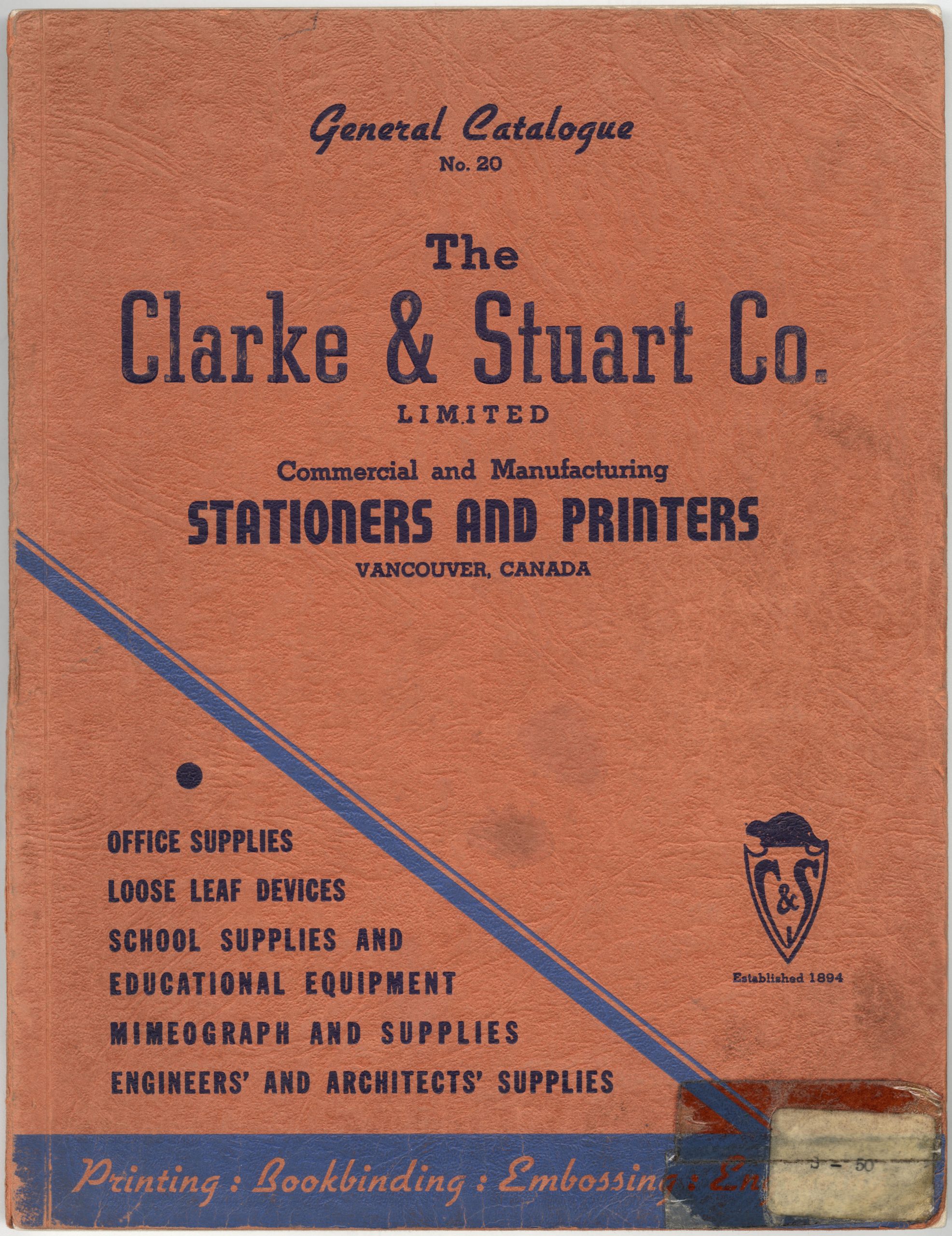
Browsing through the products on offer, one can see how much office products and functions have changed, or on the other hand, how much office products and functions have remained essentially the same over the last several decades. There are items for sale which may amuse the reader, such as the rubber phone shoes on page 48, helping ensure the phone does not slip around on one’s desk. Or there are the steno cuffs on the same page “made from the finest clear celluloid, bound in different colors of Leatherette”, ensuring that the user’s blouse cuffs remain pristine, and free of ink or graphite stains. The paperclips, envelopes, file folders, pencils, sharpeners and rulers, by contrast, could be ordered from the catalogue for today’s workplace.
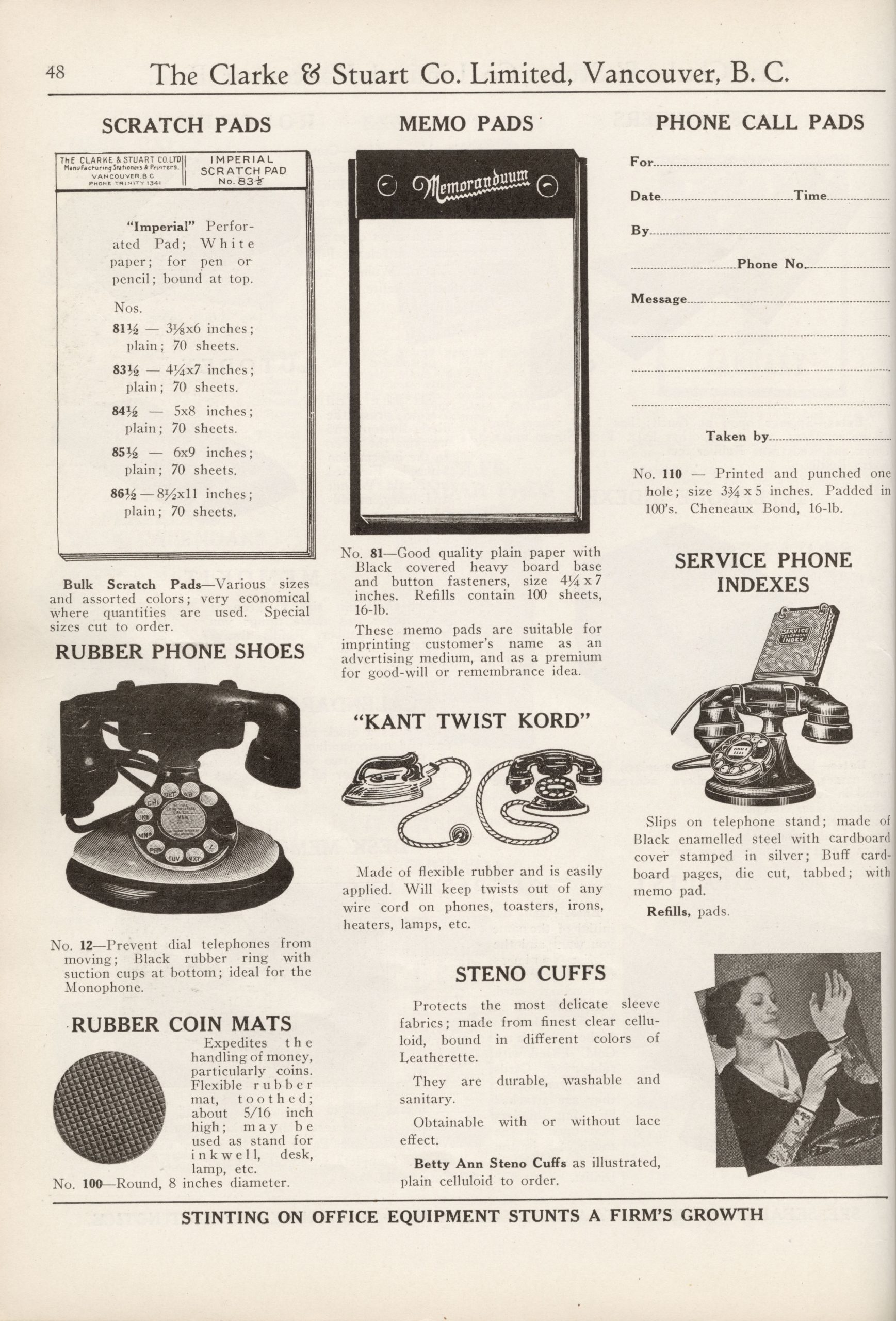
This particular catalogue doesn’t have a year printed on it, but the notice tucked inside the cover page states that “Publication of the Price List for this Catalogue has to be suspended owing to war restrictions and other factors beyond our control,” making it clear that the catalogue dates from the World War II time period.
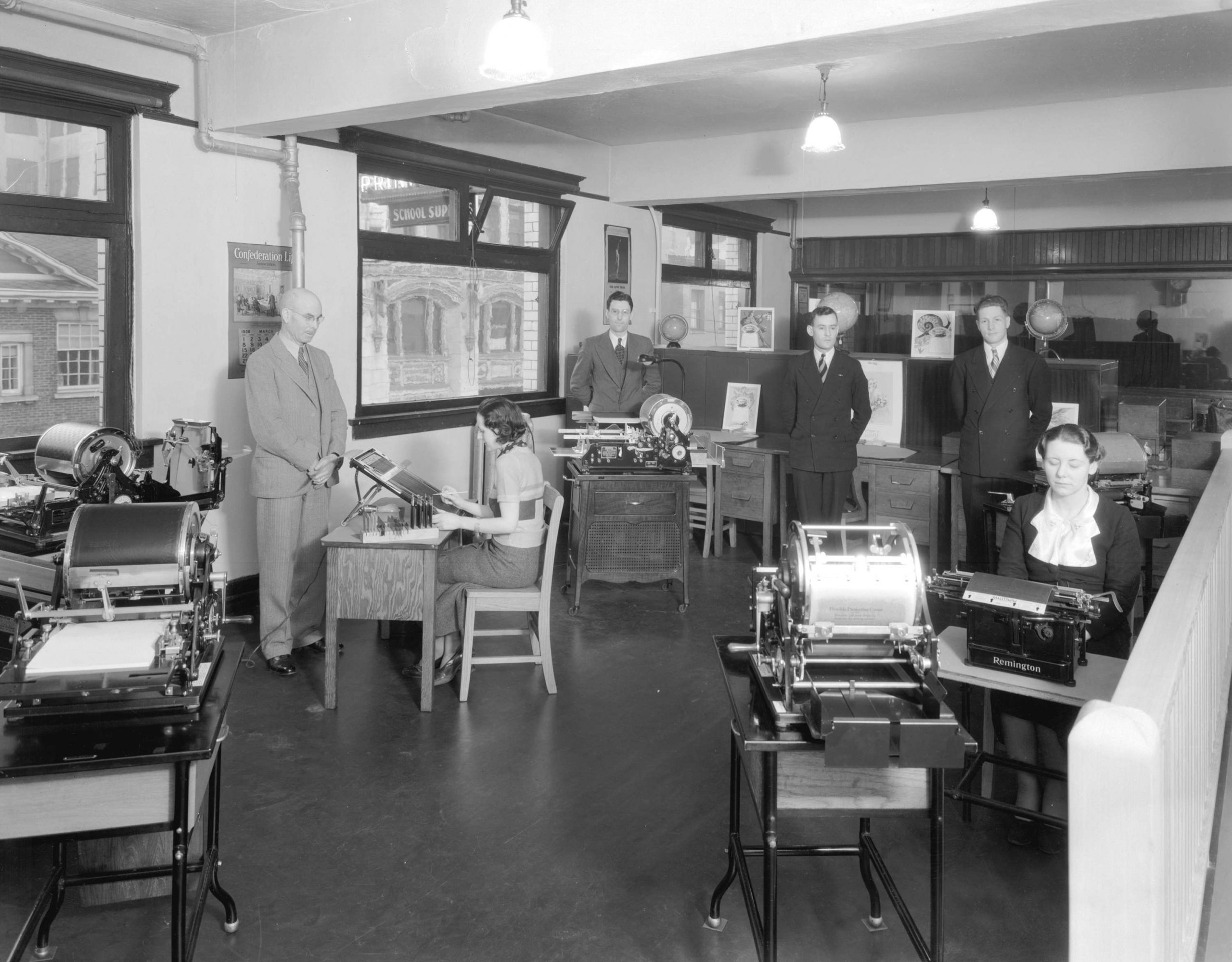
Clarke & Stuart was a Vancouver-based company, established in 1894, by Harold Curtis Clarke, a New Brunswick native, and J. Duff Stuart, a Scotsman. The duo, both of whom had been working for the stationery firm Thomson Bros. prior to 1894, bought Tilley’s Book Shop, which was located at 11 Cordova Street, and transformed it into Clarke & Stuart Books & Stationery. An article from the Vancouver Daily World on July 13, 1894 described the company as a “jobbing house in books, stationery, office supplies, wrapping papers, paper bags, twines, sporting and fancy goods, etc., etc.,” as well as the “exclusive agent for the Mainland of British Columbia for the Heintzman piano, the Thomas organ, and the Smith Premier Typewriter,” and “dealers of smaller musical instruments, and sheet music.” This description adequately explains why such a variety of items can be seen in a photograph of their 28 Cordova Street premises from 1898. By the time this Catalogue No. 20 was produced, the musical section of the business no longer existed.
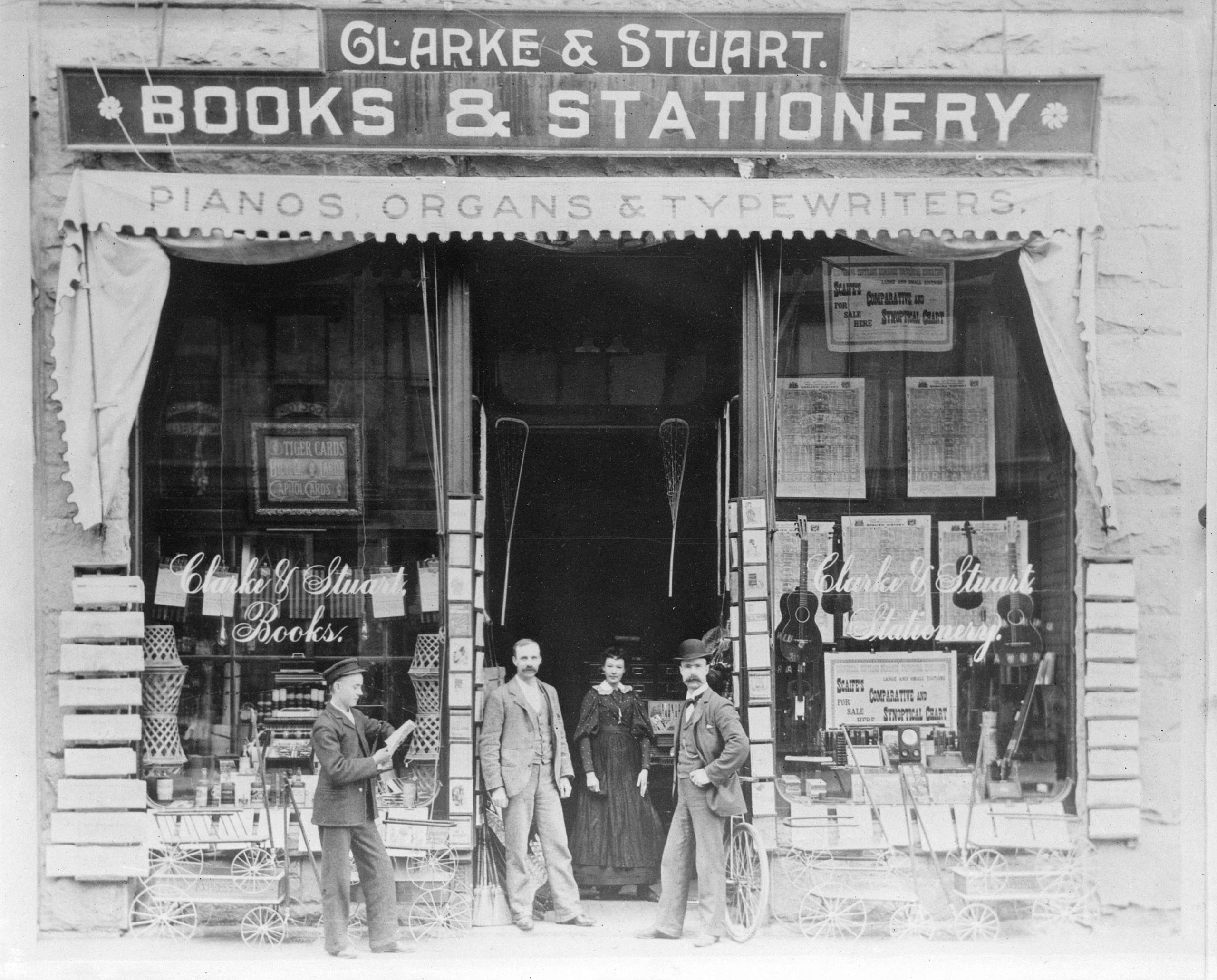
Near the end of World War II, on January 1, 1945, Clarke & Stuart was sold to the H.L. Willson Company, a stationery firm with its origins in Winnipeg. After the purchase, Clarke & Stuart became a division of the Willson Company, and remained so for the next thirty years. The last mention of Clarke & Stuart in the city directories is in 1975, eighty-one years after it was established.
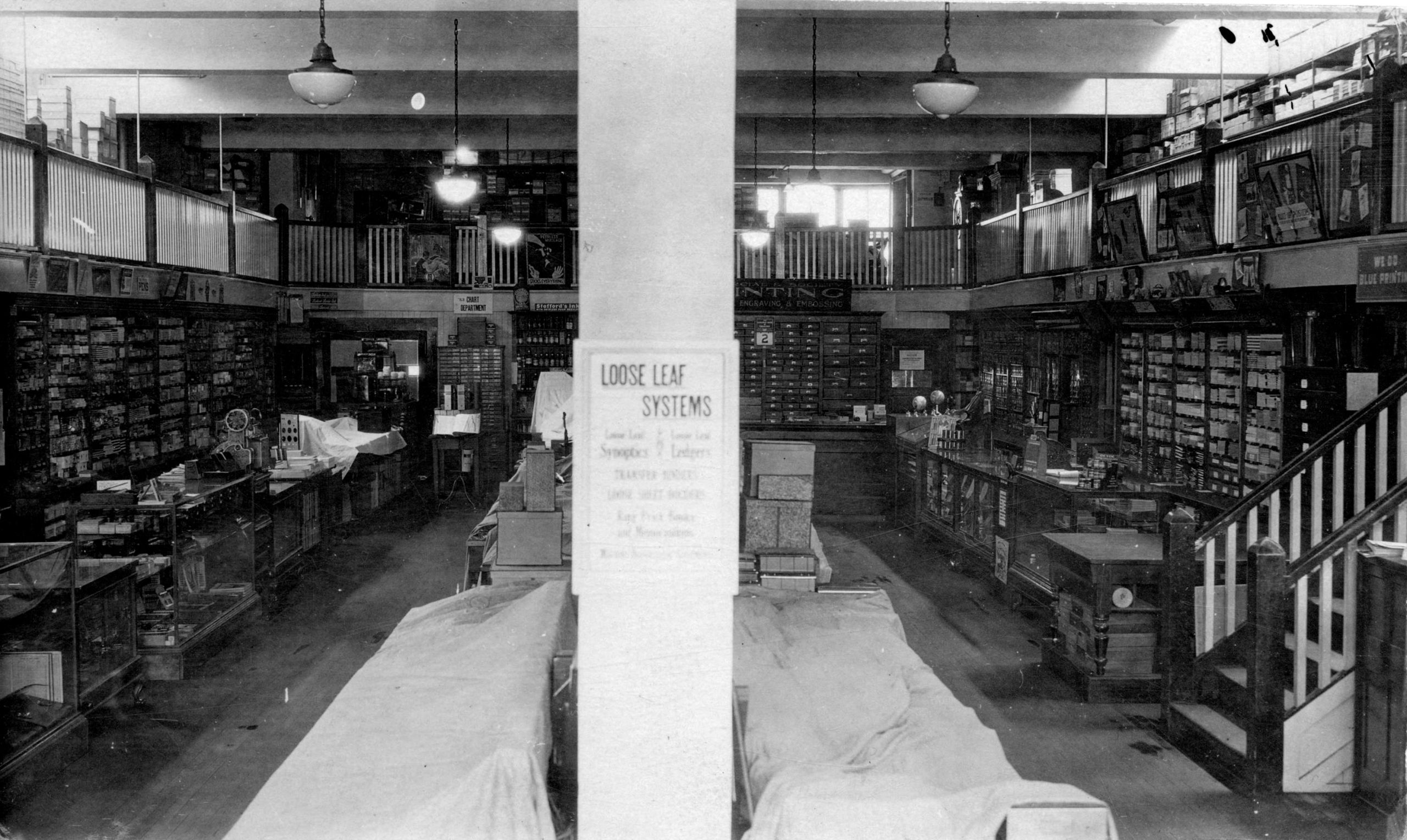
In addition to Catalogue No. 20, the Archives’ holdings contain The Chatterer, a Christmas gift suggestion catalogue from 1926 from Clarke & Stuart, an advertisement in the form of an ink blotter from 1930, and several items printed by the company. All items can be viewed in our Reading Room.
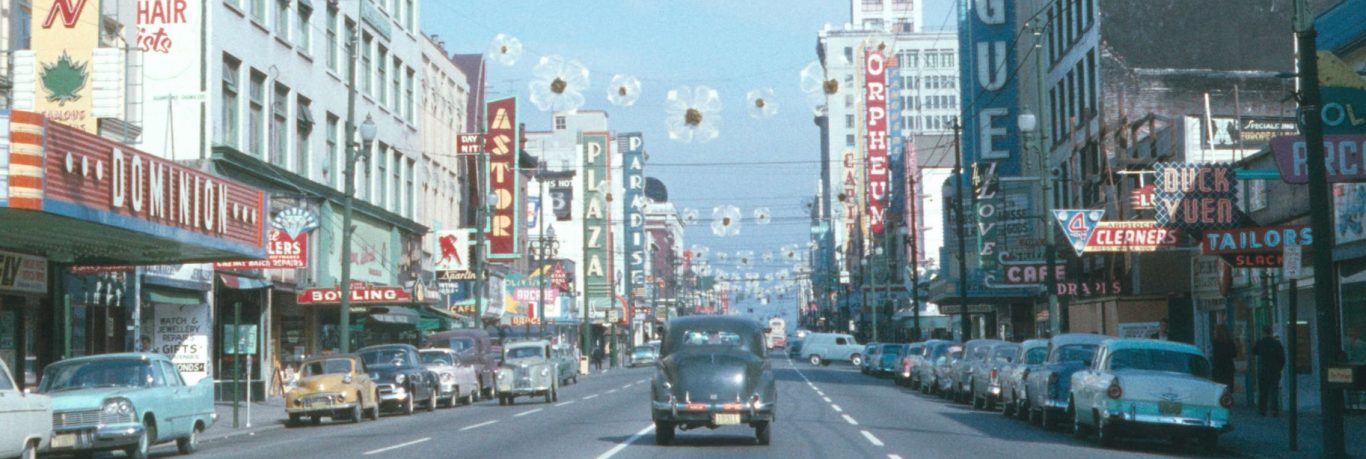

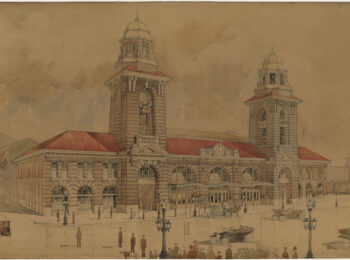
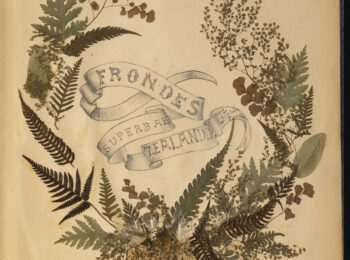
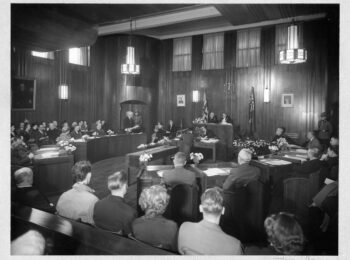
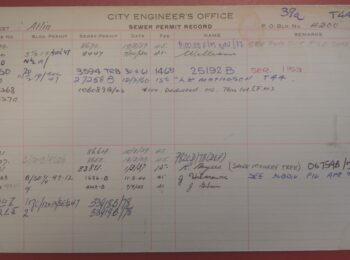
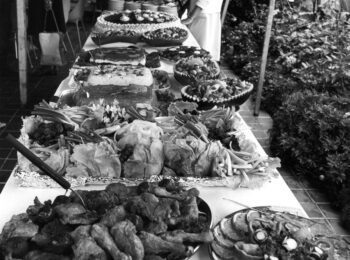
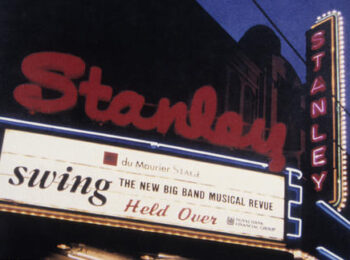
I just the research article re: Clarke & Stuart Co. The City of Greenwood was incorporated 125 years ago and remains Canada’s smallest incorporated city.The City has a cast-iron seal made by Clarke & Stuart Co. and it is still used today (mostly for business licences). It is extremely heavy, but the design is quite lovely. I can send a photo if you are interested.
Andrea Sherstobitoff
Corporate Officer
City of Greenwood
Thank you, Andrea. One of the archivists will be in touch with you shortly.
So very interesting! My great grandfather was Harold Clarke do this is fascinating. My daughter just found a book in a thrift store titled Legends of the Evergreen Coast, author George H Griffin published in 1926 by Clarke and Stuart which is an interesting book on Indiginour legends of the day. They also published Al Purdys first book of poems in the 1940s first edition and delivered 100 or less books to him and destroyed 400 other copies for no payment. Harold came from a famous family in NB where he had a brother who was premiere during first world war and another brother who was chief medial officer of NYC at turn of the century.
I have a deck of playing cards that my husbands great uncle played with during his life. It has different pictures and scenery on the front and a view of the Rockies in the background (I am not sure if it is Lake Louise) surrounded by coloured Maple Leaves. It also says that on receipt of $1.00 they will ship a pack of these cards. Would you be interested in them for your museum
Hello Anna. Thank you for reaching out to us. We’ll have our reference archivist follow up with you via email.
Hi, I also have the same deck of cards as Anna Fraser. I am looking to publish an article about them for The World of Playing Cards site , https://www.wopc.co.uk/ which I’m sure will be of interest to collectors. I wondered if it was possible to use the photo of the exterior of the Clark and Stuart shop in the article, with an acknowledgment to the Vancouver archives?
There is also a phot that I found on https://evelazarus.com/the-photography-of-stephen-joseph-thompson-1864-1929/ of Cordova street, which I believe belonfs to yourselves and again, I would love to use this on, just to add some historical background to the article.
It’s not a profit making site, just an area where we share Playing card interest.
Many thanks
Hello Ian. Both images are no longer under copyright, so you are free to use and reuse them however you wish. Credit to CVA, and citing each item’s reference code is much appreciated. The one in Eve’s post is AM54-S4-: Str P118
I came across a book photo book ‘Souvenir of Vancouver’ published by Clarke & Stuart. Does anyone have any idea when that may have been published and it’s value?
Thank you for the question, Kkyle. Without seeing to item, it’s difficult to suggest a date. We have a couple of these in our holdings that date to around 1900, but I’m not sure how long Clark & Stuart published these types of booklets. One of the rare book dealers in town may be able to help date it as well as suggest its monetary value.
Brad Clarke, above, says that Clarke & Stuart published Legends of the Evergreen Coast in 1926.
All information I have says it was not published until 1934.
Hoping he nay see this, and verify!